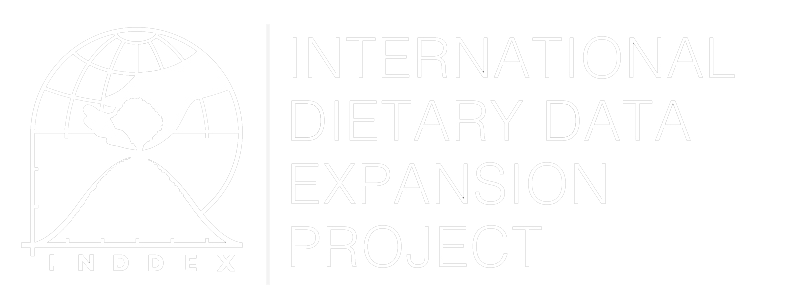Share of Food Consumed Away from Home of Total Food Consumption% kcals
Overview
The share of food consumed away from home of total food consumed provides a glimpse into individual and household dietary quality at the population level and can highlight dietary trends over time and across countries. Food prepared or purchased outside of the home is becoming an increasingly important component of the diet in many countries, especially in urban areas (Smith & Subandoro, 2007; Bezerra et al., 2013). The quality and nutrient content of foods purchased or consumed outside of the home can vary significantly from food consumed in the home. Foods consumed outside of the home are more likely to be processed and higher in salt, sugar, and unhealthy fats (Vandevijvere et al., 2013). Studies have found that consuming food away from home is associated with higher energy and fat intake and lower micronutrient intake (Lachat et al., 2012).
Method of Construction
Data used to construct this indicator can be obtained from individual Weighed Food Records or 24-hour Dietary Recall surveys and Food Frequency Questionnaires (FFQ) that include both the type and amount of each food consumed and the foods consumed outside of the home. It is important to note that the information about foods consumed outside the home is at the individual level and then aggregated up to the household if collected for all household members. After the quantities of reported foods have been determined, a Food Composition Table (preferably local or regional, if available) is used to estimate the energy (in kcal) composition of the foods recalled in the survey. The indicator can then be constructed using the fraction, below, and then multiplying it by 100:

Data collected at the individual level should be used for this indicator. In addition, some Household Consumption and Expenditure Surveys (HCES) include individual-level data measuring food (or expenditure) consumed away from home in the household survey. If using individual data from the HCES, one can refer to the ADePT-FSM (Food Security Module) software package, which includes this indicator and is a free standalone software developed by the Food and Agriculture Organization (FAO) and the World Bank that allows users to easily derive food security indicators from household survey data. The software download and corresponding documentation can be found on the FAO website. Please also see the Moltedo et al. (2014) book published by the World Bank, which provides detailed instructions for analyzing food security using household survey data.
Uses
This indicator can be used to assess dietary patterns with individual-level data and provide information that can inform strategies to promote healthy food consumption away from home (Bezerra et al., 2013).
Strengths and Weaknesses
This indicator can be used to assess differences in eating patterns by sub-population groups based on geographic location, income group, and other sociodemographic characteristics of interest. Individual-level data, e.g. from 24-hour Dietary Recalls, should be used for this indicator. However, if HCES data are used, there are several constraints, including the fact that many HCES collect information only on the monetary value of food consumed away from home, making accurate energy estimations difficult, and requiring big assumptions as well as extra steps and calculations to derive an estimate of the energy (kcal) value (Moltedo et al., 2014).
Data Source
The best data source for this indicator would use individual-level data from Weighed Food Records, 24-hour Dietary Recalls, or FFQs, which allow for quantification of food intake, both inside and outside the home. In addition, HCES data that include individual-level data (e.g. a Nutrition Dietary Survey module) can be used to calculate this indicator. The World Bank Microdata Library has the most comprehensive and publicly accessible repository of data. Otherwise, data can be accessed - often for a fee - from many National Statistics Offices, though each country has its own policies and procedures. The International Household Survey Network (IHSN) is an informal network to promote data standards and dissemination. However, only a limited number of countries collect information on food consumed outside of the home in HCES (Fiedler et al., 2012). For more detailed information on the limitations of the use of HCES data for food consumed outside of the home, refer to Moltedo et al. (2014) and Smith et al. (2014).
Links to Guidelines
- Moltedo et al. (2014). Analyzing food security using household survey data: Streamlined analysis with ADePT software. World Bank Publications.
- Moltedo et al. (2018). Optimizing the use of ADePT-Food Security Module for Nutrient Analysis. Food and Agricultural Organization.
- Smith & Subandoro (2007). Measuring food security using household expenditure surveys. International Food Policy Research Institute.
Links to Illustrative Analyses
- Bezerra et al., (2013). "Contribution of foods consumed away from home to energy intake in Brazilian urban areas: the 2008-9 Nationwide Dietary Survey."
- Lin et al., (1999). "Nutrient contribution of food away from home."
- Crespo-Bellido et al. (2021). The association between food-away-from-home frequency and a higher BMI varies by food security status in US adults. The Journal of Nutrition.
- Cunha et al. (2018). At-home and away-from-home dietary patterns and BMI z-scores in Brazilian adolescents. Appetite.
- Landais et al. (2022). Consumption of food away from home in low-and middle-income countries: A systematic scoping review. Nutrition Reviews.
